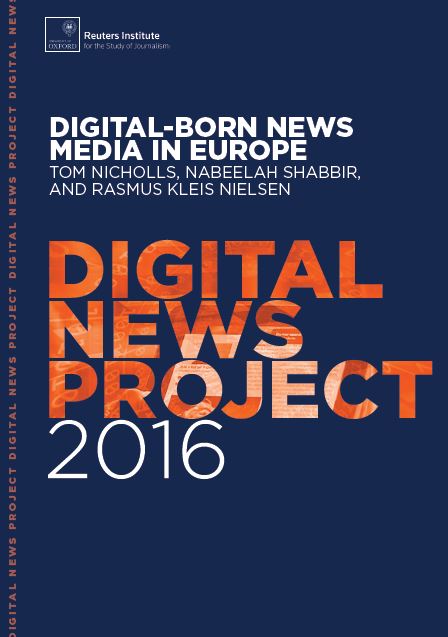Digital-born News Media in Europe

DOI: 10.60625/risj-d7k0-sk74
In this report, we examine twelve digital-born news media organisations across four different European markets: France, Germany, Spain, and the UK. The organisations covered include a mixture of domestic for-profit, domestic non-profit, and international players.
We find: First, that European digital-born news media are clearly rooted in the profession of journalism. The organisations we cover are generally launched by journalists, often senior ones with experience of legacy media, and not businesspeople or technologists (and generally operating without the kind of major investment that has fuelled the expansion of some US-based international brands). Producing quality journalism or having social impact are more prominent goals than delivering digital innovation or building lucrative new media businesses.
Second, that digital-born news media are generally more prominent in Spain and France, with relatively weak legacy news media, than in Germany and the UK where legacy media remain strong. In every market, they are significantly smaller in terms of reach, revenue, and editorial resources than major legacy news media. New journalistic ventures seem to have found the most success where old ones are weak, rather than where digital media are most widely used or where the online advertising market is most developed.
Third, while different in some important ways, we find that European digital-born news media organisations are similar in many respects to legacy media. Some interesting journalism is being done, but the cases covered are generally not necessarily more innovative than leading legacy media in terms of their funding models, distribution strategies, or editorial priorities.This reflects their focus on journalism over business and technology.
Fourth, digital-born and legacy news media face very similar challenges online, especially around funding and distribution. In terms of funding, the online advertising market remains difficult for all content producers and progress with signing up subscribers is generally gradual. As a result, digital-born organisations are trying many of the same approaches – video, native advertising, various pay models, and commercial diversification – as their legacy counterparts.
Firm figures are hard to come by, but the available evidence suggests most digital-born media are at best financially stable and not highly profitable. In terms of distribution, the shift from a direct relation between producer and users to one increasingly intermediated by search engines and social media represents the same combination of challenges and opportunities to digital-born news media as for legacy media. Our more detailed analysis covers three related areas: funding models, distribution strategies, and editorial priorities.
Published by the Reuters Institute for the Study of Journalism with the support of the Google and the Digital News Initiative.

This report can be reproduced under the Creative Commons licence CC BY. For more information please go to this link.








